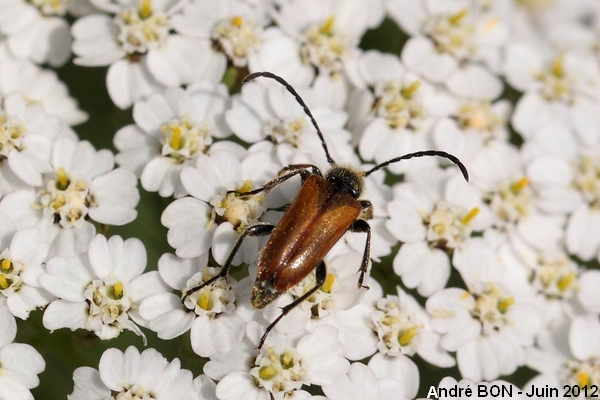
| Fairy-ring Longhorn (Pseudovadonia livida (Fabricius, 1776)) |

|
|
Scientific name: Pseudovadonia livida (Fabricius, 1776) Common name: Fairy-ring Longhorn French name: Pseudovadonie livide Order: Coleoptera Family: Cerambycidae Wingspan : 6-9 mm. Biotope: The larvae grow on the soil in the humus of forests where they feed on hypha or mycelium of fungi of the Marasmius genus and in particular Marasmius oreades. Adults are observed on flowers. Geographic area: Europe and all western part of the Palaearctic region east to Kazakhstan and to western Siberia, Near-East, Middle-East. Observation period : May to September. |
The Fairy-ring Longhorn has shiny black head, pronotum and scutellum. The elytra are brownish yellow. The head is broad. The pronotum is slightly longer than wide, tapering at the front and rounded on the lateral sides. Both head and pronotum bear a dense erected pubescence. The antennae reach about three fifth of the length of the elytra on males. They are shorter on females where they barely reach half of the length of the elytra. The second article is about one third of the third one. The third is about equal to the fourth, the fifth is slightly longer. Then the articles are progressively shorter and thicker. The shoulders are clearly wider than the base of the pronotum. The elytra progressively taper towards their rounded tips. The legs are black. The fore and middle tibias are slightly brownish. |
| [To know more about the Fairy-ring Longhorn] [Top] |

|
The rather long antennae indicate one male. |